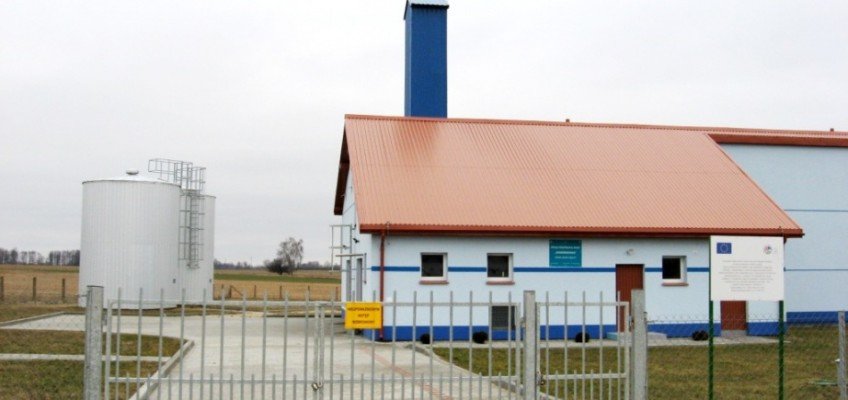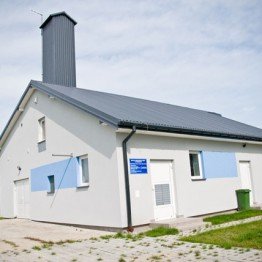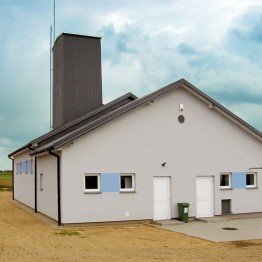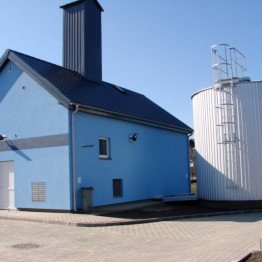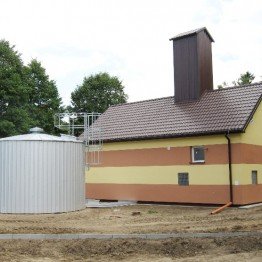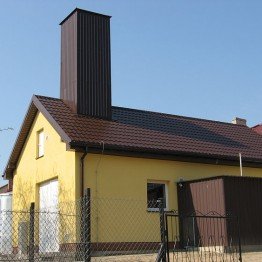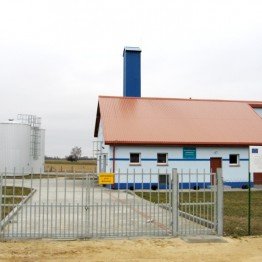Open-air aeration system – WN-BART aeration tower is designed for water treatment stations and is used to:
- aerate water in the open-air system,
- feed water to the filters and the intermediate tank by gravity or gravity and pump.
Open-air aeration is required in case of:
- low alkalinity water,
- the presence of the aggressive carbon dioxide and hydrogen sulphide,
- the need to remove iron and manganese compounds.
It is also used in cases where pressure aeration becomes uneconomic, which occur at large water supply stations. The tower serves at the same time as the energy battery. It is usually constructed so that the resulting water column could overcome the resistance of filter beds, and the water energy, remaining after the filtration, could be used to supply the intermediate tank.
Aeration tower can work with pressure filters and, above all, with BART-ZF filter sets, in which the filter beds are located just above the foundation level of the filters. In this case, it is possible to use the entire geometric height of the tower to compensate the loss of pressure head of the station. The water is accumulation in the collecting tank of the tower. The tank can be adjusted for different capacity, due to which the aeration tower may reflect different functions of the water supply station:
- it can be used for aeration, thanks to the use of aeration column,
- it can be used as energy battery, if the tank it raised high enough above the foundation level of the filters,
- it can be used to control the operation of the pumps through the appropriate retention storage of the tank,
- it can be used as a reaction or settling tank thanks to the appropriate capacity and design of the collecting tank.
Aeration tower consists of:
- Aeration columnwith pipes linked together into cascades, manifolds supplying raw water to the column, nozzle system initially breaking the water into streams, manifolds supplying air from the fan, air filters and fan(s) which can be mounted on the tower by the column or in a different location (e.g. inside the waterworks station). All pipes and the column are thermally insulated with mineral wool and polystyrene.
- Collecting tankwith the capacity and equipment dependent on its intended use. The tank is thermally insulated. In the case of tanks with the capacity of up to a dozen m3/h, the tower is usually set on the roof ceiling, suitably supported, of the station building. In the case of tanks set on the foundation, the tower can be set in the station building or next to, as a separate object. If this solution is chosen, the tank is thermally insulated with mineral wool only, covered with troughed sheet, galvanized and enamelled in any colour, or aluminium sheet.
- Bearing structure and cover fixing, ladders
Materials used for the construction of WN-BART aeration tower:
- aeration column housing and water supply system: acid-resistant steel or PE,
- set of pipes: PVC or PP
- collecting tank: acid-resistant steel
- bearing and supporting structure: profiles made of carbon steel treated with anti-corrosion coatings
- ladders: carbon steel protected against corrosion by hot dip galvanization
- façade coverings: steel sheet, solely galvanised or galvanized and enamelled in any colour
As an option, other material solutions are possible.
The advantages of the aeration tower:
- multi-purpose use in the water supply station,
- maintains constant filtration capacity, regardless of the magnitude of filter beds resistance,
- simple design and operation,
- vide range of use – from a few to a few thousand m3/h,
- low operating costs,
- high reliability,
- keeps the air clean through the use of filters,
- ensures a specified water aeration level even when fans are stopped,
- preserves the energy from pumps operation, converting the kinetic energy of water into the gravitational pressure,
- practical elimination of water hammer in the equipment,
- good de-aeration of water before it enters the filters, which contributes to maintain a steady flow of treated water through the filters,
- possibility to supply the overflows from the filters to the tower and create the conditions for the operation of the filters as open, as defined in the provisions of Technical Supervision Office (UDT),
- elimination of expensive compressors that requite a lot of space and energy.


